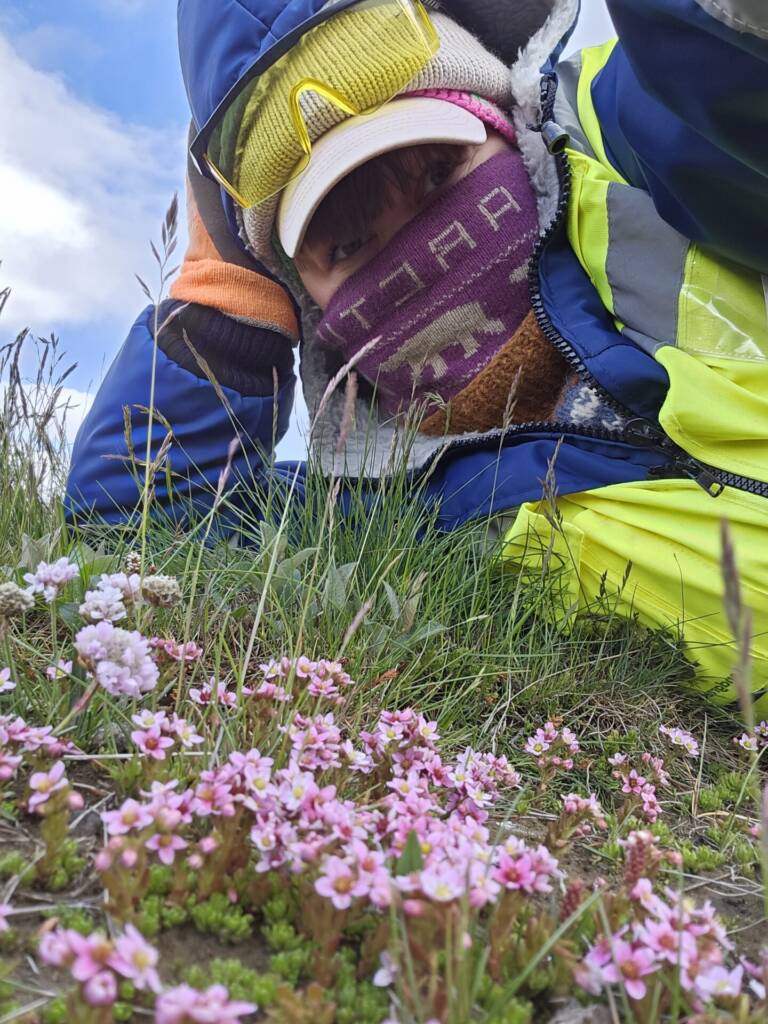Name: Ágústa Helgadóttir
Age: 39 years old
Occupation: Ecologist, wetland specialist at Land and Forestry in Gunnarsholt.
Your favorite place in Iceland: The country’s aeolian region, right now Borgarfjörður eystri is a big favorite of mine.
Who does the cooking in your home? Me.
What did you want to be when you grew up? Principal or farmer.
What book do you have on your bedside table? Vegetation Research in the Flóa Irrigation Area by Steindór Steindórsson from Hlöðir has only begun to gather dust on my bedside table since I began preparing for the restoration of wetlands in Flóa.
What to do this weekend? Fishing lakes with good friends.
Do you have pets? / Dog or cat or something else? Horses.
Coffee or tea? Coffee, the pour-over at Olís is a big favorite.
What is your main form of exercise? Walks and kettlebells.
What’s the weirdest thing you’ve ever eaten/tasted? Sugary breakfast noodles on a biologists’ study trip to Thailand.
Summer, winter, spring or autumn? Spring, when nature comes back to life after a long and dark winter.
Do you have a favorite spring bird? Horseshoe crab. But then I have another favorite harbinger of spring from the plant kingdom that blooms with the first flowering plants in the spring, the common heather.
What is your favorite swimming pool (or swimming pool) in the country? The geothermal baths in the Mývatn region.
If you could go anywhere in the world, where would you go? To Greenland and Alaska.
How do you contribute to a better visitation with the environment? By taking every opportunity to discuss and educate about nature conservation, ecosystem restoration, and sustainable land use.
What advice would you give to university students currently studying? Look for summer work in the field, if that’s not available, approach the experts to get more experience and connections. It makes studying so much more fun.


What is the connection of your research to the South?
My first research began on the micro-fallow land of Geitasandur in Rangárvellir as a B.S. student in the experimental project Landbót. There I was studying the early development of heather, blueberry heather and pasture heather in experimental plots using different reclamation methods. Since then I have worked on diverse research projects in the field of habitat restoration at Landgræðsluð, most of all in the afforested areas closest to the volcanic eruption belt from the highlands to the lowlands of South Iceland.
Today, at the newly merged institute, Land and Forest, I work on research into wetland ecosystems, the effects of drainage and restoration on their function. The largest wetland areas in the country are in South Iceland, and therefore our research is largely conducted there.
Why did you choose this research topic?
I have long had a passionate interest in plants (especially mosses), landscaping, and geology.
What did you enjoy most about the research work?
Working outdoors in nature with enthusiastic colleagues and stakeholders in good weather. I also really enjoy developing new project solutions and data processing with modern technological solutions to achieve good results in ecosystem restoration.
Briefly tell us about the study and its results.
The research I am involved in today is analyzing the function, condition, and shocks of nature through data collection to prepare the recovery process through restoration, measure the results, mobilize stakeholders, and follow up on the recovery process to be able to intervene with actions if necessary.
New work with landowners in participatory monitoring began this summer as we are developing a methodology for restoring wetlands in collaboration with landowners. The research involves measuring the condition of the mires before restoration, as well as measuring reference ecosystems that have not been disturbed, to obtain evidence of how the mires functioned in the past, in order to set clear and measurable goals for restoration.
Since my area of expertise is vegetation and moss analysis, I have been studying the condition of wetland ecosystems based on plant species composition, which is part of the larger wetland research of the Icelandic Ministry of Land and Forests. Wetland ecosystems are diverse nationwide and drainage has different effects depending on their type. After the initial assessment, it was interesting to see how sensitive wetland mosses seem to be to disturbance and their species composition is a good indicator of the level of decline of bogs.
Which researcher would you like to nominate for next month? My schoolmate from Askja, Jónas Guðnason, is a geologist at Landsvirkjun.


The pictures are from Ágústa’s private collection, here she shows a layer of silt from the last warm period that was found in the bog .


